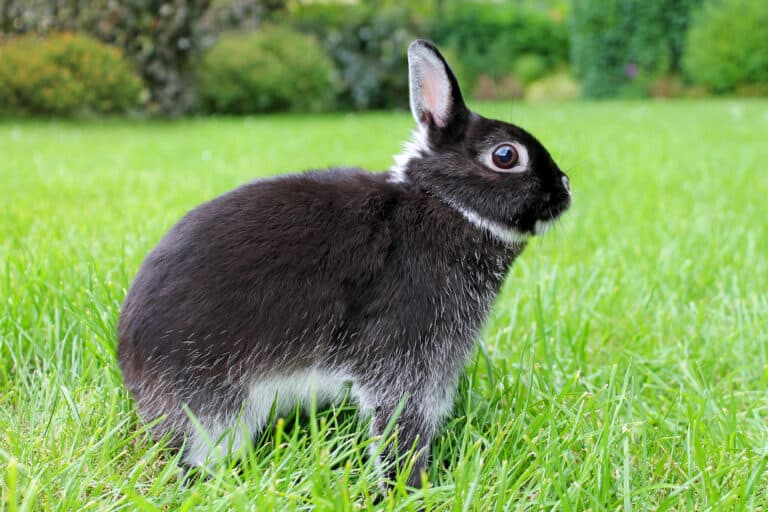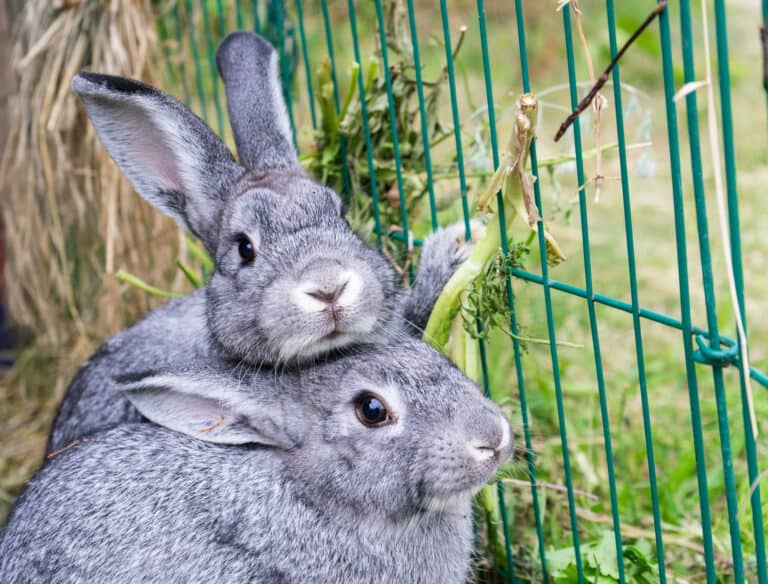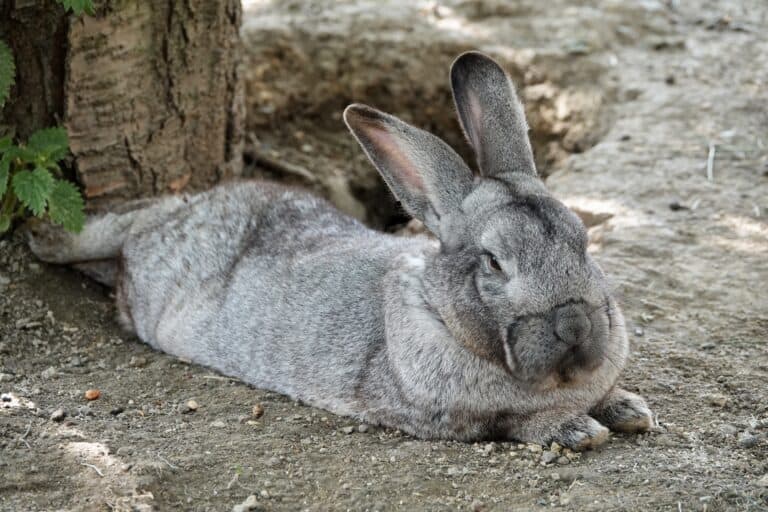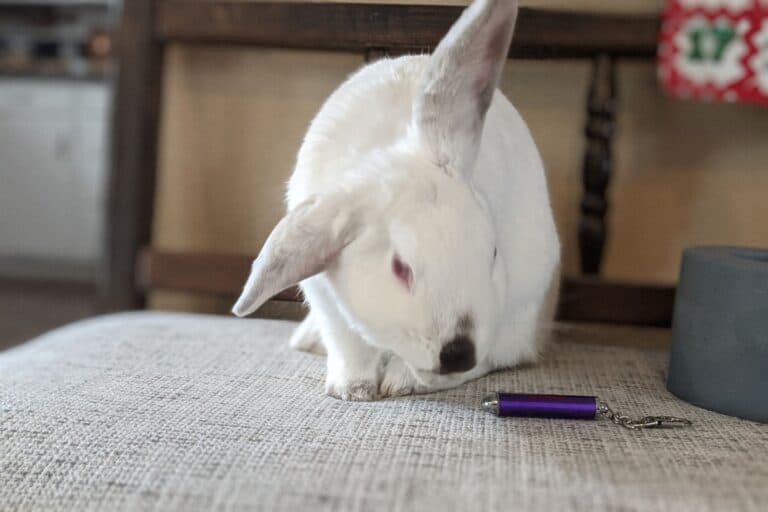How Big Do Rex Rabbits Get?

Are you a pet lover who wants a rabbit as your latest fur baby? With several breeds to choose from, picking the breed that will best suit your home and personality can be a little challenging. Rex Rabbits are some of the more popular choices. However, if size is one of the considerations for your choice, you might wonder how big Rex Rabbits get. Let’s talk about this bun type to help you determine if they’re what you’re looking for in a pet.
About the Rex Rabbit
This bun breed was once called the Castor Rex Rabbit. It got its name due to a genetic mutation that created its unique coat that has a soft, velvety texture. Castor refers to the breed’s color while rex means king.
The Castor Rabbit came from France. It was developed from a litter of wild, gray rabbits that had stunning, lustrous fur. Deliberately keeping the genetic mutation that resulted in their velvety coat, the Castor Rabbit was selectively bred with other domestic bun types. It was introduced in the U.S. sometime after 1924, where it quickly gained popularity as an animal companion.
Physical Appearance

A short, plush coat with hair that stands upright is the hallmark of this rabbit breed. The absence of the longer guard hairs gives the fur its distinctive velvety look and feel.
Rex Rabbits have large ears that stand erect, plump, round bodies and strong legs. They come in various colors such as castor, blue, black, amber, lilac and chocolate.
Temperament
An extremely friendly breed, the Rex Rabbit is popular among families because it can get along well with almost everyone, even children. Rex Rabbits also thrive in various living conditions. They fare well in apartments, large homes, indoors or outdoors. Frequent handling, even from unfamiliar people, doesn’t seem to upset them.
However, although these rabbits tend to be calm and docile, they spook easily so you’ll need to make sure you provide a peaceful environment for them. A quiet living area without sudden noises suits this breed best.
How Big Do Rex Rabbits Get?
Rex Rabbits come in two varieties, and thus, two sizes.
- The Standard Rex Rabbit: This bun type usually reaches a weight that ranges between 7.5 and 10.5 pounds and a length of approximately 12 inches. It reaches this size in adulthood, which is at around 8-9 months old.
- The Mini Rex Rabbit: This variety reaches adulthood faster. It’s considered full grown at around 6-7 months and by then, it would typically weigh between 3 to a little over 4 pounds. Its length is just a tad below its Standard Rex Rabbit counterpart, at 10 inches.
The females, or does, tend to grow slightly larger and heavier than the males or bucks. But of course, the rabbit’s size is also influenced by other factors, such as the genes of its ancestors.
How Much Space Do They Require?
Having adequate housing, whether indoors or outdoors, is essential for rabbits. Their living area should have at least 12 feet of space, with an additional 32 feet of fenced-in play space. Rabbits need plenty of exercise so keeping your pet inside a cramped cage for most of the day can potentially harm his physical and mental wellbeing.
Carefully consider the materials of your bun’s housing as well. It should be made of durable wire because rabbits love to chew and they can easily gnaw through thin housing materials, such as chicken wires. Provide a solid bottom for the cage. We don’t recommend using wires for the cage bottom. Not only can your pet’s feet get trapped in the holes, wire bottom cages sometimes lead to sore hocks in rabbits.
Feeding Requirements of Rex Rabbits
A balanced and nutrient-dense diet will help your bun reach his full growth potential. Like other breeds, the Rex Rabbit is a herbivore. Thus, it should eat mainly hay (Timothy Hay is ideal). Hay will provide him with the fiber he needs to keep his digestion working smoothly. Moreover, it will help whittle down his ever-growing teeth, which can cause dental issues if they get overly long.
Green leafy veggies, a little fruit, pellets and some treats will provide variety to your pet’s meals. Remember to supply him with fresh, clean water at all times.

Does This Breed Get along with Other Pets?
Being friendly and docile, Rex Rabbits can co-exist peacefully with your other fur babies. Their strong nurture drive often prompts them to “mother” other animals. Moreover, their size also discourages cats from attacking them.
However, it’s another story when it comes to dogs. If you have a pup with a strong prey drive, supervise your pets’ interaction. Make sure that your dog doesn’t chase or bark at your bun as this can traumatize your rabbit and lead to health issues if it goes unchecked.
How Long Will They Live?
The lifespan of Rex Rabbits depends on their type. The Standard Rex Rabbit lives to around 5-6 years. Meanwhile, its smaller counterpart tends to stay around longer, usually between 7-9 years. Of course, other factors come into play that may shorten or lengthen your bun’s life. These include:
- Genetics
- Spaying or neutering
- Diet and exercise
- Housing
- Level of mental stimulation and socialization
How Healthy Are Rex Rabbits?
The Rex Rabbit is a relatively healthy bun breed. Still, it can be prone to some health conditions specific to rabbits. Let’s take a look at some of these issues.
- Pododermatitis: Also called sore hocks, this is a skin infection that affects the feet. Pressure on the foot pads or exposure to moist surfaces are some of the common causes of this condition. Left untreated, it can worsen and lead to more severe medical issues like joint inflammation. Pododermatitis is more common with larger breeds like Rex Rabbits because of their weight.
- Dental problems: Buns’ teeth keep growing throughout their lives. If the teeth get too long, they can grow into your bun’s face and cause pain or lead to an infection.
- Gastrointestinal conditions: Rabbits have sensitive digestions. As such, tummy upsets commonly occur. However, one potentially serious condition that may strike your Rex Rabbit is gastrointestinal (GI) stasis, where the food stop moving in a bun’s gut. This usually makes your fur baby stop eating. In turn, it leads to a pH change in the intestinal tract that allows the proliferation of gas-producing bacteria. If not treated, the condition can lead to organ failure or even death.
Now that you know how big Rex Rabbits get and how to care for them, we hope you can more easily decide whether they’ll make a good addition to your home and your life.
We hope you enjoyed this post! If you did, will you give it a share or two 🙂 Thank you! ~from Every Bunny Welcome







